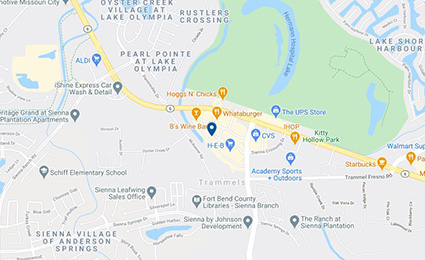Radiofrequency Ablation
What is Radiofrequency Ablation?
Radiofrequency ablation is a minimally invasive procedure that uses radiofrequency energy to stop nerves in the spine from sending pain signals to the brain. It is sometimes called rhizotomy or neurotomy, specifically when used to treat neck, back, and spine pain.
RFA uses heat to target facet joints or the sacroiliac joint to provide lasting pain relief to patients with injury or degenerative diseases, such as arthritis, in the neck or back. Radiofrequency ablation may be recommended when more conservative treatment, such as medication and physical therapy, fails to relieve pain. Patients who have experienced pain relief after a diagnostic nerve or pain receptor block injection may be good candidates for radiofrequency ablation.
What to expect during Radiofrequency Ablation
The patients will lie on an X-ray table as the skin on the back or neck is numbed with a local anesthetic. A low dose sedative is used, but the patient typically remains awake during the procedure. Using a fluoroscope x-ray, the doctor will direct a thin hollow needle into the area with the pain. Heat is used to create a lesion on the nerve, disrupting its ability to transmit pain signals to the brain.
The in-office procedure lasts between 30 and 90 minutes, and the skin puncture is covered with a small adhesive bandage. Most people return home the same day and experience relief within one to two weeks. The pain relief typically lasts months or even years. In some cases, the nerves grow back and the process will need to be repeated. Your pain management specialist will give you specific information personalized to your condition and lifestyle goals, as well as a detailed description of the procedure and instructions on how to recover successfully.
What you can expect at UTHealth Neurosciences
The UTHealth Neurosciences Spine Center brings together a multidisciplinary team of board-certified, fellowship-trained neurosurgeons, neurologists, researchers, and pain management specialists who work together to help provide relief for even the most complex problems. Your team will share insights, leading to better treatment decisions and outcomes.
We first investigate nonsurgical treatment options, including medical management, pain management, physical therapy, rehabilitation, and watchful waiting. When surgery is needed, our neurosurgeons routinely employ innovative minimally invasive techniques. Throughout the treatment process, we will work closely with the doctor who referred you to ensure a smooth transition back to your regular care. While you are with us, you will receive expert care, excellent communication, and genuine compassion.
Anatomy of the neck and spine
The spine is divided into the following regions:
- The cervical region (vertebrae C1-C7) encompasses the first seven vertebrae under the skull. Their main function is to support the weight of the head, which averages 10 pounds. The cervical vertebrae are more mobile than other areas, with the atlas and axis vertebra facilitating a wide range of motion in the neck. Openings in these vertebrae allow arteries to carry blood to the brain and permit the spinal cord to pass through. They are the thinnest and most delicate vertebrae.
- The thoracic region (vertebrae T1-T12) is composed of 12 small bones in the upper chest. Thoracic vertebrae are the only ones that support the ribs. Muscle tension from poor posture, arthritis, and osteoporosis are common sources of pain in this region.
- The lumbar region (vertebrae L1-L5) features vertebrae that are much larger to absorb the stress of lifting and carrying heavy objects. Injuries to the lumbar region can result in some loss of function in the hips, legs, and bladder control.
- The sacral region (vertebrae S1-S5) includes a large bone at the bottom of the spine. The sacrum is triangular-shaped and consists of five fused bones that protect the pelvic organs.
Spine Disease and Back Pain
Arthrodesis
Artificial Disc Replacement
Cauda Equina Syndrome
Cervical corpectomy
Cervical disc disease
Cervical discectomy and fusion
Cervical herniated disc
Cervical laminectomy
Cervical laminoforaminotomy
Cervical radiculopathy
Cervical spondylosis (degeneration)
Cervical stenosis
Cervical spinal cord injury
Degenerative Disc Disease
Foraminectomy
Foraminotomy
Herniated discs
Injections for Pain
Kyphoplasty
Laminoplasty
Lumbar herniated disc
Lumbar laminectomy
Lumbar laminotomy
Lumbar radiculopathy
Lumbar spondylolisthesis
Lumbar spondylosis (degeneration)
Lumbar stenosis
Neck Pain
Peripheral Nerve Disorders
Radiofrequency Ablation
Scoliosis
Spinal cord syrinxes
Spinal deformities
Spinal injuries
Spinal fractures and instability
Spinal Cord Stimulator Trial and Implantation
Spinal Fusion
Spinal Radiosurgery
Spine and spinal cord tumors
Spondylolisthesis
Stenosis
Tethered spinal cord
Thoracic herniated disc
Thoracic spinal cord injury
Transforaminal Lumbar Interbody Fusion
Vertebroplasty
Contact Us
At UTHealth Houston Neurosciences, we offer patients access to specialized neurological care at clinics across the greater Houston area. To ask us a question, schedule an appointment, or learn more about us, please call (713) 486-8100, or click below to send us a message. In the event of an emergency, call 911 or go to the nearest Emergency Room.











